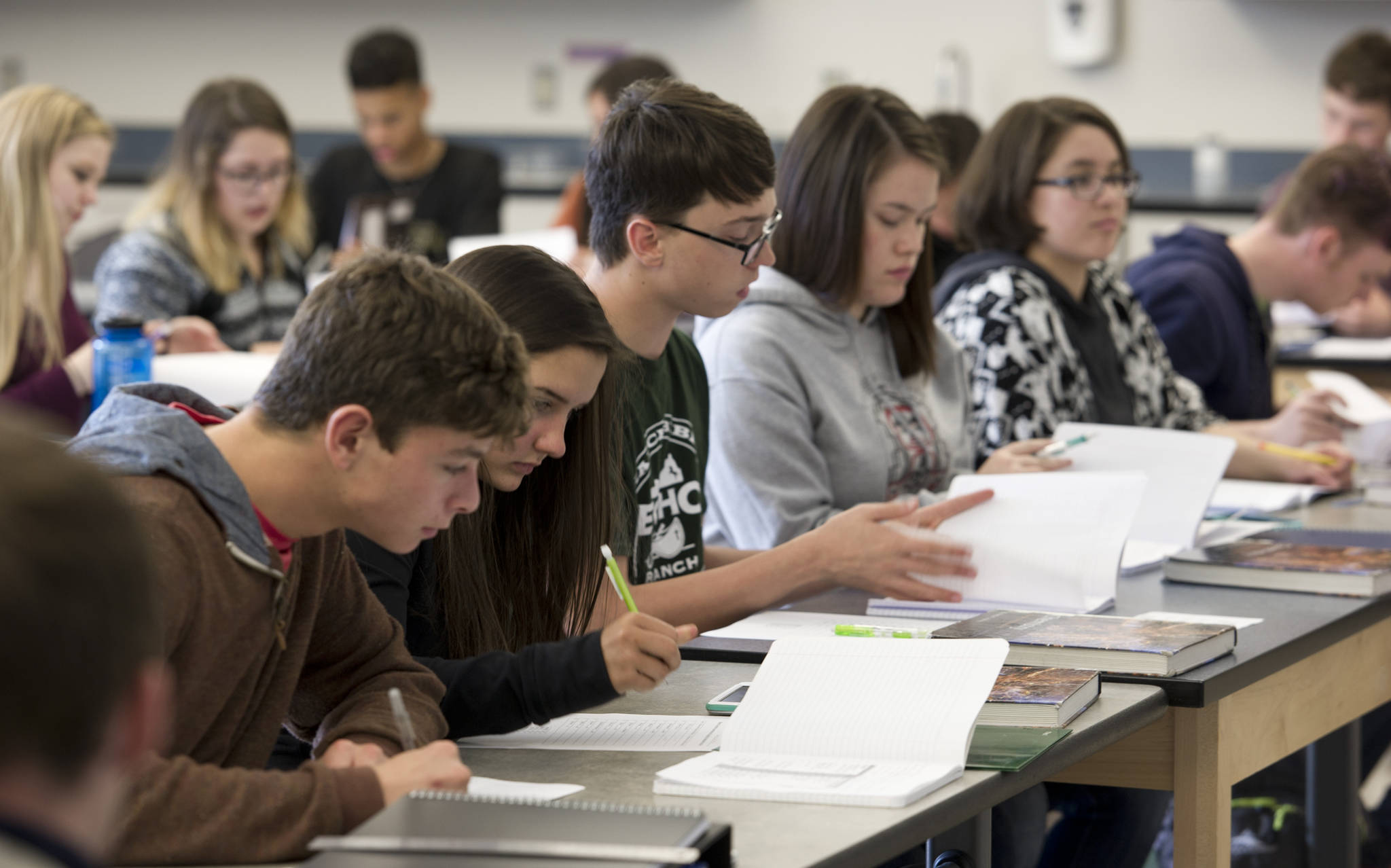Juneau students performed slightly better than their statewide peers on the annual Performance Evaluation for Alaska’s Schools (PEAKS), according to data released Thursday.
The PEAKS assessment is conducted annually and is given to all public school students in Alaska grades 3-9. Its purpose is to measure school performance in terms of specific state standards.
While Juneau students fared better, a majority of students in the district failed to meet state standards for proficiency in both math and English language arts (ELA).
According to state data, 46 percent of Juneau students graded as proficient or advanced in ELA while only 39 percent of students statewide reached proficiency.
Forty percent of Juneau students were proficient in math compared to 35 percent statewide.
Also released Thursday were results for the Alaska Science Assessment. That test is given at the same time as PEAKS but only to students in grades four, eight and 10.
A majority of Juneau students were graded proficient in science but just barely. Fifty-one percent of Juneau students were graded proficient while 45 percent of students statewide reached proficiency.
Juneau’s fourth graders scored the highest in math with 45 percent reaching proficiency. However, math proficiency gets progressively worse with higher grades. Eighth- and ninth-graders were only 27 and 28 percent proficient, respectively.
In science, Juneau’s 10th graders did the best with 58 percent proficient while fourth graders scored the lowest at 46 percent.
Juneau School Superintendent Bridget Weiss said is continuously trying to improve educational outcomes for it students.
“We’re pleased that our students scored higher than the state average,” she said in a phone interview. “As always, we’re continuing to challenge ourselves to find ways we can serve our students.”
Weiss said it’s difficult to attribute cause and effect to data because “the work we do with kids is incredibly complex and occurs across a large continuum of issues.”
The average ELA proficiency of Juneau students dropped slightly from last year when 48 percent were graded proficient. Math stayed about the same with last year’s results showing 40.43 percent compared to this year’s 40.88 percent.
Proficiency standards are set by the state and can be difficult to encapsulate because standards have varying goal posts depending on grade level.
Specific examples of what is required for each grade in a specific subject can be found at DEED’s website.
Weiss said it’s important to remember that PEAKS “is one measurement, at one point in time,” that the district uses in combination with other metrics like classroom-based assessments and teacher feedback.
She added that because this year’s results was only released Thursday morning, the district had not yet had an opportunity to do a “deep dive” into the data.
Reached by phone Thursday afternoon, Juneau School District Board of Education President Brian Holst said that he couldn’t comment yet but that the board would be looking at the data at its next meeting on Tuesday, Sept. 10.
• Contact reporter Peter Segall at 523-2228 or psegall@juneauempire.com.

